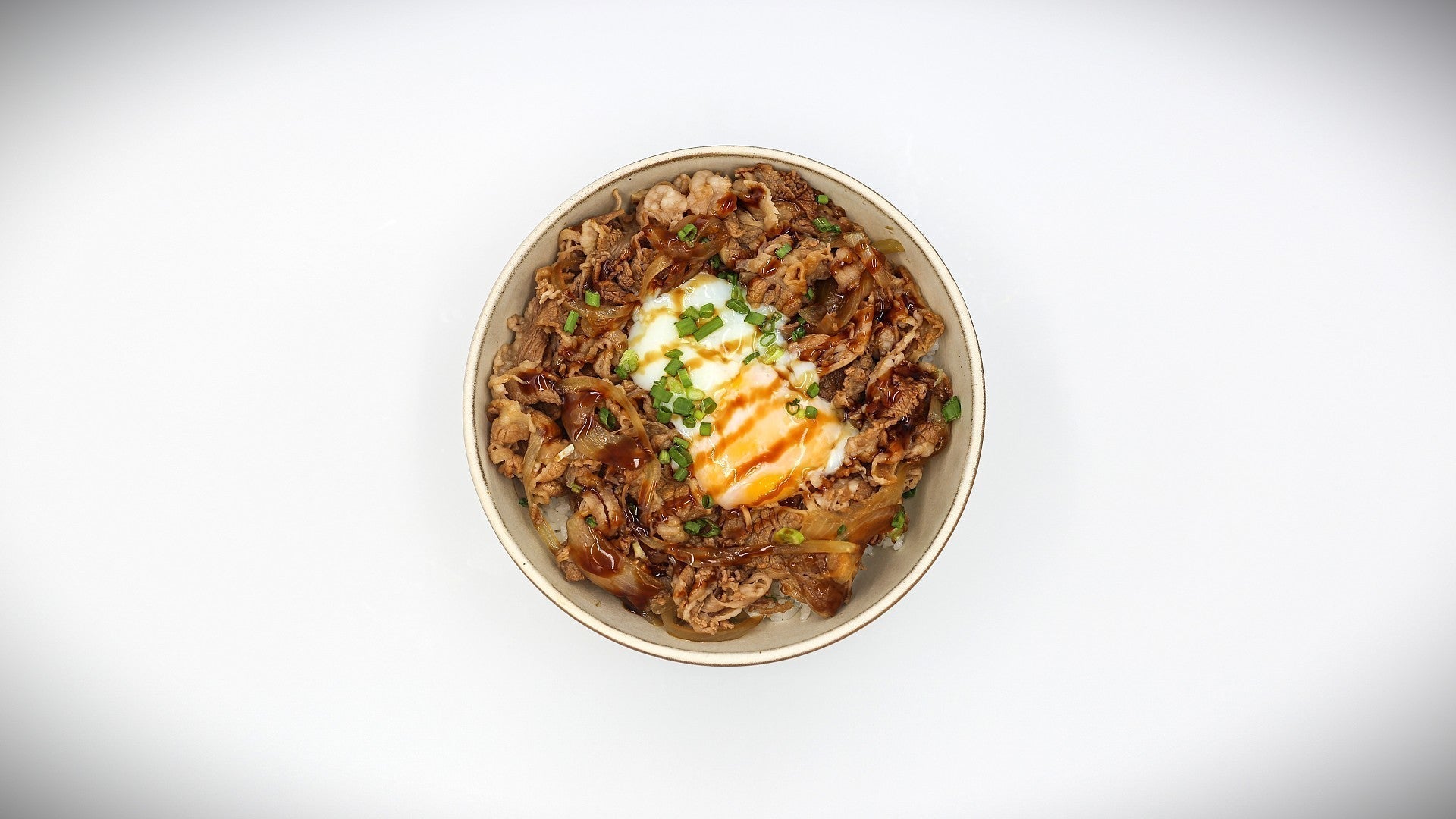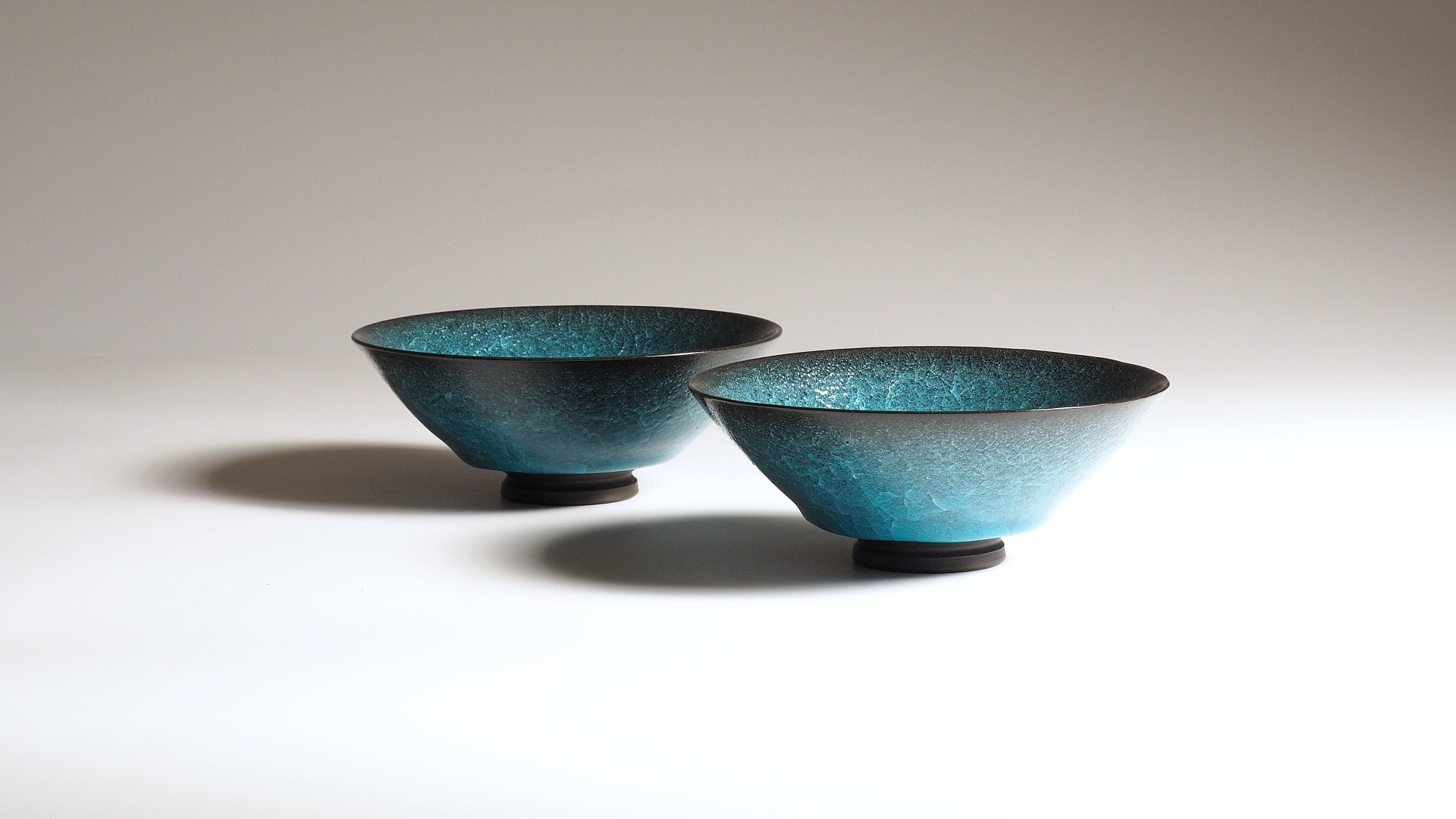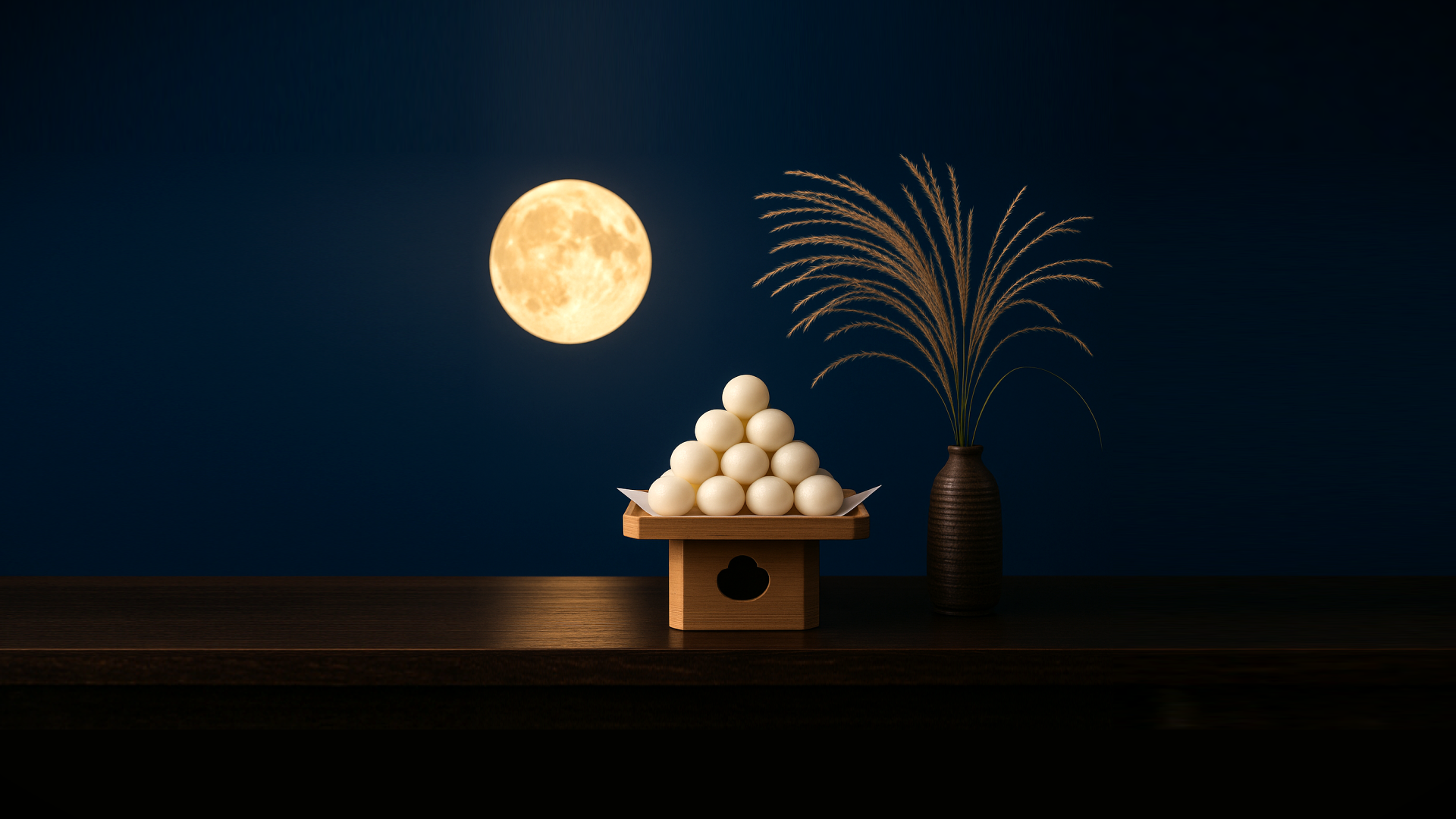
What is Donburi? The Bowl and the Meal in Japanese Cuisine
In Japanese, the word donburi refers at once to the bowl and to the rice-based meal it contains.
The vessel, known as donburi bachi (丼鉢), is larger and deeper than a regular rice bowl because it is designed to hold a complete dish in one serving.
That dish, called donburi mono (丼物), is made by layering simmered toppings: meat, fish, vegetables (or even simple leftovers) over steamed rice. This double meaning shows how inseparable the bowl and the meal are in Japanese dining culture: the form and the food exist together as one idea.
Definition and Everyday Role of Donburi
A donburi is practical, but it also carries symbolic weight. In homes, giving each person a single bowl reduces fuss at the table and emphasizes comfort over ceremony.
One well-loved example is oyakodon, literally “parent-and-child bowl,” which brings together chicken, egg, and rice in a way that feels both nourishing and affectionate.
In restaurants, donburi dishes are the backbone of casual dining, from quick-serve gyūdon chains like Yoshinoya to family-run eateries with sturdy, timeworn ceramics.
More than just functional, the donburi bowl has become a quiet reassurance in everyday life. Place a steaming bowl in front of someone and it seems to say, “everything you need is right here.”
That blend of simplicity and coziness explains why donburi remains central to Japanese food culture today.

Oyakodon, a beloved Donburi dish featuring chicken simmered with egg over rice.
A Brief History of Donburi
To understand why the donburi bowl became so central, it helps to look back at where it started.
Like many Japanese traditions, it has roots in practicality but evolved into something with cultural depth.
Donburi might feel timeless today, but in the long arc of Japanese cuisine it’s actually a relatively recent invention. Its origins trace back to the Muromachi period, yet it truly flourished in Edo, and reached maturity during Meiji when many of the bowls we know today first appeared.
Muromachi Period – The Roots of Donburi
The earliest ancestor of donburi is thought to be houhan (芳飯), a dish from the Muromachi period (室町時代- Muromachi jidai, 1336-1573) that was actually quite simple: it consisted only of rice with vegetables and dashi broth ladled over it.
What mattered, however, was not sophistication but the idea of combining rice with toppings into a single bowl, something not very common at that time. This new format suited the household economy of the era, where food was produced and consumed within small, local units.
Donburi could only grow further when Japan’s economy and culture expanded, making it more than a local habit. Some scholars even note that the “maturity” of donburi culture mirrors the maturity of the nation itself.
Edo Period – The Rise of a True Donburi Culture
By the Edo period (江戸時代 - Edo jidai, 1603-1868), Japan had developed a bustling urban economy, and with it the appetite for quick, satisfying meals.
Edoites, famous for wanting to eat fast and well, pushed cooks to place toppings directly onto rice.
It was here that cultural accumulation gave birth to iconic forms: tempura paired with rice became tendon (天丼), and eel grilled with sauce over rice became unadon (鰻丼).
Donburi was no longer just an idea, it became a complete cultural dish, made possible by the mix of new foodways and the fast-paced rhythm of Edo life.

Unadon, a refined variation of Donburi, featuring grilled eel and egg, here presented in a lacquer-style bowl.
Meiji to Early Modern Times – Expansion and Innovation of Donburi
The Meiji (明治時代- Meiji jidai, 1868-1912) and Taishō (大正時代 - Taishō jidai, 1912- 1926) eras brought dramatic change.
With democracy, capitalism, and freer social customs, new bowl meals appeared. Gyūdon (牛丼, beef bowl) emerged in the 1890s, oyakodon (親子丼, chicken and egg) around 1891, and katsudon (カツ丼, pork cutlet bowl) by the 1920s. These three alone became household staples.
During wartime, donburi culture slowed, but Japan’s post-war growth fueled a new wave: bifutekidon (ビフテキ丼, steak bowl) in the 1950s, followed by the seafood-rich kaisendon (海鮮丼).
By then, donburi had cemented its role not just as a quick bite but as a reflection of modern Japanese life, adaptable to both tradition and new trends.
Source: All Japan Donburi Union
Today, you can find donburi in almost every corner of Japan, from small diners with two or three specialty bowls to luxury restaurants presenting seasonal ingredients in refined versions. The humble donburi has moved far beyond its Edo origins but has never lost that initial idea: a complete and nourishing meal presented in a single dish.
💡Cultural Insight: The kanji 丼 (donburi) is one of the rare characters created in Japan rather than borrowed from China. Over time, it traveled the other way: Chinese writing adopted it too, thanks to the global spread of Japanese food culture.
Symbol of Convenience, Comfort, and Abundance
At its core, donburi symbolizes abundance without excess: a full bowl that looks generous even if it is just rice topped with a few slices of fish or vegetables.
That visual fullness carries emotional weight, and it reassures the eater, suggesting both satisfaction and care.
Not to mention its practicality because instead of juggling several small plates, you get everything in one.
This balance between simplicity and generosity has kept donburi at the heart of Japanese dining for centuries.
Donburi Bowl: Design and Features
Let’s now focus on the vessel itself: the donburi bowl. It is not just functional, but carefully designed for its role at the table.
Later we will explore the meal it holds, but here the emphasis is on the bowl’s form and how it compares with other traditional Japanese bowls.
Shape and Size of Donburi Bowls
A typical donburi bowl is deeper than a rice bowl but not as large as a serving bowl.
Its wide rim makes it easy to hold with one hand (although if you have small hands it might be a little challenging), while chopsticks or a spoon can easily dive into its contents.
So let’s try to put it in perspective and compare it with other common Japanese bowls, just to have an idea of where it stand.
A rice bowl (飯碗, meshiwan) usually holds plain rice with no toppings.
It is smaller in depth and diameter (about 300–400 ml capacity), easy to hold and compact enough not to dominate the table (for example, rice bowls might be ~11 cm diameter × ~6 cm height).
Ramen or soup bowls, on the other hand, are built to contain liquids and toppings together: broth, noodles, garnishes.
They tend to have wider rims, greater diameter and depth (e.g. 21 cm across, ~8.5 cm deep) so the broth doesn’t spill and slurping is manageable.
The Donburi bowl sits between these: enough depth to keep sauce or broth mingled with rice, enough width to allow toppings to sit without overcrowding.
Therefore, its size is larger than a meshiwan (often 1.5× its volume) but usually less extreme than a full ramen bowl.
The height, rim opening, and shape are all tuned so you can mix, see, and eat comfortably with chopsticks or a spoon, and still enjoy a meal that looks generous without being unwieldy.
| Bowl Type | Typical Size | Capacity | Use |
|---|---|---|---|
| Rice Bowl | ~11 cm diameter × ~6 cm height | 300–400 ml | Plain rice, usually without toppings |
| Donburi Bowl | Between rice and ramen bowl size | ~500–700 ml | Rice with toppings as a complete one-bowl meal |
| Ramen/Soup Bowl | ~21 cm diameter × ~8.5 cm depth | 800 ml or more | Noodles, broth, and garnishes |
How Donburi Bowls Are Made and Finished
Most donburi bachi (丼鉢) belong to the broader family of hachi (鉢) bowls, and they’re typically made from ceramic or porcelain. You’ll often see earthy stoneware with soft, satin glazes as well as bright porcelain decorated with regional patterns.
In some homes or long-standing restaurants, lacquerware bowls (漆器) appear too, light in the hand and quietly elegant, and wooden bowls add warmth and a softer mouthfeel.
Material changes the experience, not just the look.
A heavier ceramic keeps food hot longer and gives a sense of solidity. Porcelain feels smooth and crisp. Wood or lacquer makes the bowl lighter, easier to handle, and a touch warmer against the fingers.
Decoration runs from minimalist whites and indigo lines to classic wave or floral motifs. Small choices, big differences at the table.

An elegant donburi bowl, expertly crafted from Katsura wood (Japanese Judas tree), part of the Tsukushi Bowl Collection.
Popular Donburi Dishes
If you walk into a diner in Tokyo, Kyoto, or Osaka, the menu will almost always feature some variation of donburi.
These bowls are household names in Japan, and many have made their way abroad too. Each one tells its own story.
Katsudon (カツ丼) – Pork Cutlet and Egg
Katsudon is a cherished classic.
It combines tonkatsu (a breaded and fried pork cutlet), with eggs and onions simmered in a sweet-salty broth, all poured over rice.
The dish was first served in the early 20th century, and today it is beloved by students before exams, workers after long shifts, and families looking for something filling.
Part of its charm is the contrast: the crunch of the cutlet softened by the silky eggs, all soaked into the rice beneath.
💡Cultural Insight: In Japanese, katsu (カツ) is shorthand for cutlet, but it also shares the same pronunciation as 勝つ, the verb “to win.” This pun is why katsudon is cherished as a good-luck meal before exams or big challenges.
Gyūdon (牛丼) – Beef Bowl
Gyūdon, or beef bowl, is probably the most famous donburi internationally thanks to chains like Yoshinoya.
Thinly sliced beef and onions simmered in soy sauce, mirin, and dashi create a sweet-savory topping that melts into the rice.
It is cheap, quick, and endlessly satisfying.
The affordability made it a staple for students and salarymen, but the flavor has made it timeless.
Tendon (天丼) – Tempura Bowl
Tendon is built around tempura, those golden pieces of battered seafood or vegetables fried until crisp.
Laid carefully over rice and drizzled with tempura sauce, it balances lightness and indulgence. The crackle of tempura against the soft rice underneath creates a textural joy that is hard to beat.
Oyakodon (親子丼) – Chicken and Egg
The name literally means “parent and child bowl,” because it combines chicken with egg where the chicken represents the parent (親 - oya) and the egg… well, obviously the child (子-ko).
Oyakodon is perhaps the purest expression of home cooking in Japan. It is simple, warm, and nourishing. Onions, chicken, and beaten egg simmer together in a soy-based broth, poured gently over rice.
Nothing fancy, but deeply satisfying.
Kaisendon (海鮮丼) – Seafood Bowl
Kaisendon is the celebration bowl.
It showcases raw fish, shellfish, and other seafood over rice and, unlike the cooked toppings of other donburi, kaisendon is fresh and often seasonal, making it a popular choice near ports and markets.
A bowl piled with glistening salmon, tuna, shrimp, or sea urchin looks as much like art as food.

A seasonal kaisendon featuring fresh fish served over rice, a refined seafood interpretation of the traditional donburi.
Symbolism and Lifestyle Meaning
Donburi bowls are not only practical or delicious, they are symbolic too. They reflect ideas of balance and completeness in Japanese dining.
Donburi as a Symbol of Warmth and Comfort
There is something about being served a steaming bowl that feels welcoming, almost like being embraced.
Families serve donburi as an easy but caring meal while restaurants use it to offer quick satisfaction without sacrificing flavor.
The emotional connection is as important as the food itself.
One Bowl as a Complete Meal and Reflection of Japanese Dining Philosophy
Japanese dining often follows the model called ichijū sansai (一汁三菜), which means “one soup and three dishes.” In this traditional style, a bowl of miso soup, a main dish, and two side dishes are served together with rice.
Donburi simplifies that balanced idea into a single vessel: rice, protein, vegetables, and flavor, all combined. It’s not only practical but also philosophical, showing how balance can be achieved without complication.
That’s why donburi continues to feel timeless, fitting both busy modern life and traditional ideals.
Donburi Bowls in Modern Dining
Today, the donburi has not stayed confined to Japanese kitchens, it has adapted, traveled, and become a global icon. From casual chains to fine dining, its versatility shines.
From Everyday Gyūdon Shops to High-End Restaurants
In Japan, gyūdon chains like Sukiya or Yoshinoya still thrive, offering fast, affordable meals to millions daily.
At the same time, high-end restaurants serve refined versions, perhaps with wagyu beef, uni, or truffles layered over rice.
The bowl adapts to both ends of the spectrum, from everyday meals to luxury dining.
Global Adaptations and Influence in Contemporary Cuisine
Outside Japan, the donburi bowl has been embraced and reinterpreted.
Poke bowls in Hawaii, ramen shops across New York, fusion restaurants in Milan, all borrow the same principle: rice or grain as a base, topped with proteins and vegetables in a single bowl.
The form is flexible, making it a natural fit in contemporary cuisine. In a world where quick but wholesome meals are prized, the donburi bowl feels more relevant than ever.
The Lasting Appeal of Donburi
At the end of the day, the donburi bowl is much more than a dish; it is a piece of Japanese culture, a daily companion, and a symbol of warmth and completeness.
From its Edo roots to its global adaptations, it continues to embody both tradition and innovation.
Next time you hold one in your hands, notice how it carries more than food. It carries history, comfort, and a little bit of everyday magic.
Donburi FAQs
Here are some of the most popular questions about donburi.
What does the word “donburi” actually mean?
The term donburi is unique because it refers to both the vessel and the food inside. The bowl is called donburi bachi (丼鉢), while the rice-based meal it holds is called donburi mono (丼物).
How is a donburi different from a regular rice bowl?
A rice bowl, or meshiwan (飯碗), is designed to hold plain rice, usually eaten alongside several other small dishes.
By contrast, a donburi bowl is larger and deeper, often holding 1.5 times more than a standard rice bowl.
It is made specifically for combining rice with savory toppings like meat, fish, or vegetables into a single complete meal, so you can mix and enjoy everything together without needing multiple plates.
What are some of the most popular donburi dishes?
Donburi comes in many varieties, and some of the most loved include katsudon (fried pork cutlet simmered with egg over rice), gyūdon (thinly sliced beef with onions in soy sauce broth), oyakodon (chicken and egg, the “parent and child bowl”), tendon (tempura placed on rice), and kaisendon (assorted fresh seafood).
Each has its own story and reflects the local taste and seasonal ingredients that shape Japanese cuisine.
What materials are donburi bowls usually made from?
Most donburi bowls are crafted from ceramic or porcelain, materials prized for their heat retention and durability.
Traditionally, lacquer and natural wood are used in crafting unique bowls.
Why is donburi considered comforting food?
Donburi is comfort in a bowl because it gives the impression of abundance without waste.
A generous serving of rice topped with just a few well-chosen ingredients feels satisfying both visually and emotionally.
The flavors soak into the rice, creating harmony in every bite. Instead of juggling many small dishes, you have everything you need in one bowl, warm, complete, and reassuring. This makes donburi a go-to dish at home, in restaurants, and even in fast food chains.
Can donburi be adapted outside Japan?
Definitely.
The core idea of donburi, rice with toppings in one bowl, has inspired many international variations.
Hawaiian poke bowls, for example, share the same principle of fish and rice in a single serving. Fusion restaurants worldwide create new takes by using local ingredients, from grilled meats to fresh vegetables. While the flavorings differ, the convenience and satisfaction of having a complete meal in one bowl make the concept highly adaptable across cultures and cuisines.
What is the difference between Japanese donburi and Korean bibimbap?
While both donburi and bibimbap are single-bowl meals that combine rice with toppings, they differ in philosophy and presentation.
Donburi presents an assortment of ingredients, such as poultry, pork, beef, eggs, fish or seasonal vegetables, arranged over a bed of rice. These elements are often simmered together with broth or sauce, allowing the flavors to infuse throughout the dish.
Bibimbap, on the other hand, places colorful vegetables, kimchi, and proteins separately on top of the rice, with gochujang (red chili paste) added and then mixed by the diner.
Donburi emphasizes warmth and harmony from the start, while bibimbap highlights variety and texture that come together when mixed at the table.



